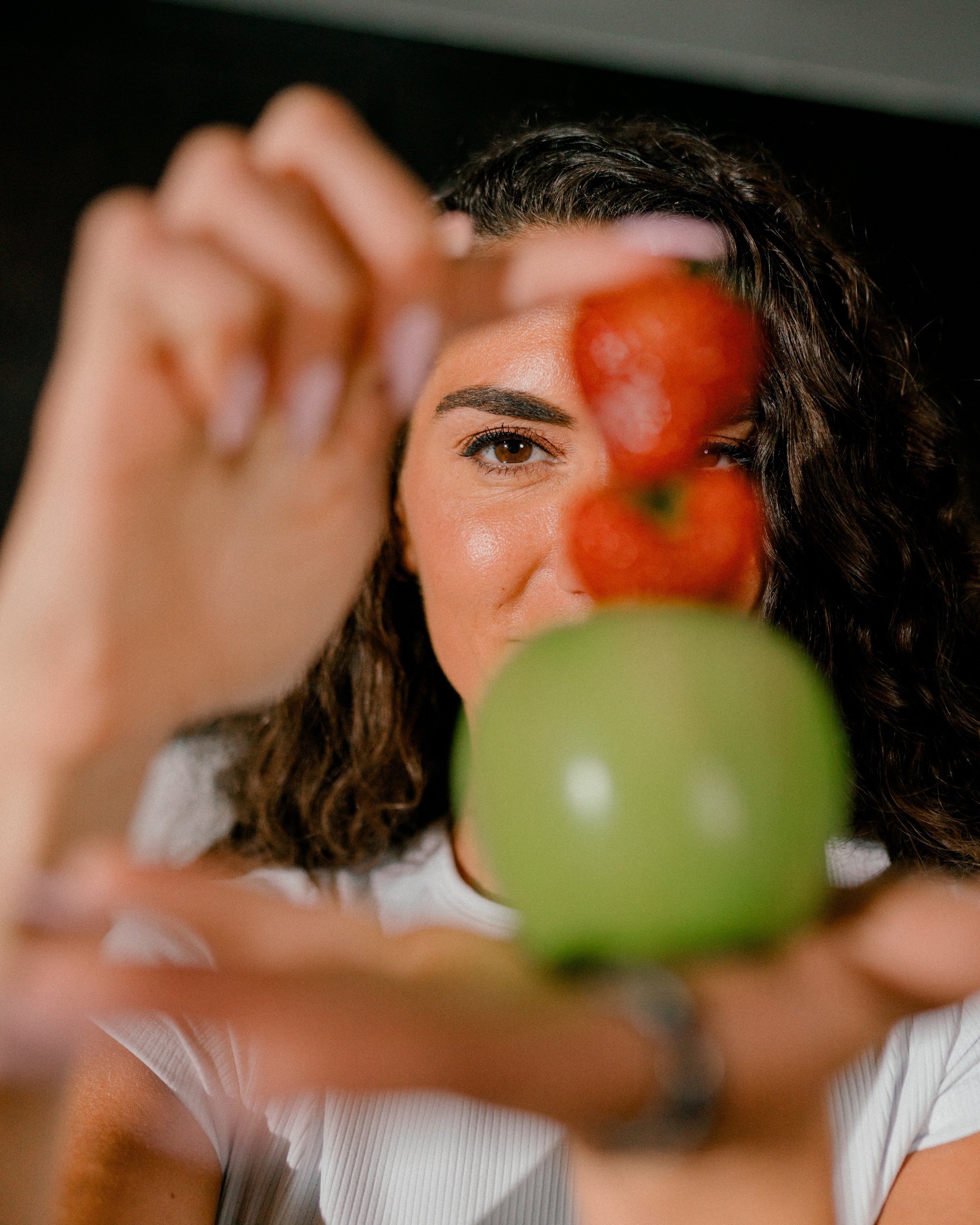7 Tips on How to Stop Counting Calories Without Putting on Body Fat
I understand how unsettling it can be to stop counting calories. I get it — I’ve been there! I was that obsessive girl who wouldn’t even go out to eat because the food wasn’t prepared by me so therefore would be difficult to track accurately.
Tracking and counting calories ruled my life.
So trust me when I say I know that It’s not easy just to give up something you feel keeps you accountable and in control.
I personally counted calories and macros for reassurance and vanity reasons. I used to think that counting was essential to protect me from gaining weight. Turns out, stopping calorie counting was one of the best things I ever did. In addition to the immense feelings of relief and freedom I experienced, I became significantly leaner after ditching the chronic math. (Surprise surprise!)
Getting over the initial hump and fear is one of the toughest things I ever had to do so if you’re struggling, I empathize with you.
Know that there is no rush to ditch tracking all at once- you can take your time with the process in order to ease your nerves.
If you fear gaining weight, reassure yourself by weighing in only once a week. Make sure you weigh in at the same time every day, preferably in the morning after you go to the bathroom. It can be a big relief to see that you’re not gaining weight as you go through this process but if you find yourself hyper fixated on the scale, I’d recommend not weighing yourself at all.
Tip #1: Practice eating when you’re hungry
Get acquainted with hunger and what that feels like for you in your body. Understand that hunger Is a normal sensation like having to use the restroom or feeling sleepy at the end of the day, it’s not a sign of anything being wrong or that you have to snap into action immediately, it’s a signal that your body is ready for food. Practicing feeling hungry for 30-60 minutes before eating each time will help you deflate fear or anxiety regarding hunger, and see that it is your ally in regulating food intake, not a “bad” sensation that must be avoided and prevented.
Tip #2: Aim to eat 3-4 meals a day
If you eat small meals and snacks throughout the day, boost your intake at meals so that you can get more hours between meals comfortably. Adding more food to lunch can get food off your mind for the afternoon and help you omit an afternoon snack.
Tip #3: Stop weighing/counting fruits and vegetables
If you’ve been diligently tracking, you are probably aware that fresh vegetables and fruits don’t contribute large sums of calories to your meals. If you feel ready, let go of logging the calories in your fruits and vegetables. This will mean that the calorie total you see is slightly less than what you are eating, but you’re not going to be using a certain number to eat up to anymore, you’re going to use your appetite cues, so it’s okay if that number is slightly off. Having a ballpark number can help keep you from getting too far out of your comfort zone.
Tip #4: Lose the log after each meal
You can keep measuring or tracking other foods, just don’t keep any permanent record. Get rid of your data at the end of the day. It often isn’t helping you in any way to have months of food data recorded. What matters is here and NOW.
I recommend setting a minimum protein and fat intake to aim for at each meal, which helps with consuming balanced meals and staying satisfied. For most people, getting at least 30 grams of protein and 15 grams of fat per meal is a good place to start for 3-4 meals a day, but for most people that will be the minimum. Then, add other nutritious foods you enjoy to round out the meal and feel satisfied. Pile on the broccoli, crunch an apple, and have some quinoa if that’s what you like.
Most importantly, don’t get caught up in keeping score and trying to eat less due to the higher calorie dinner you had last night. Just start at the next meal with a clean slate, reaching those minimums and adding other foods to reach satisfaction. This helps your mind stay focused on the present moment and gives the guilt-slinging diet mentality a swift kick in the butt.
Tip #5: Practice eyeballing food- specifically protein!
You’re probably accustomed to what foods and portions you’re most often eating to reach your target protein numbers. At this point, you can eyeball the number of ounces of meat on your plate with reasonable accuracy. If you feel ready, let yourself estimate portions to hit your protein target without using the scale to weigh it every time. Some things will naturally be portioned out for you anyway like eggs, for example, or individual Greek yogurts.
To reiterate, if you’re using hunger and satiety as your primary guide, whether you have 4 ounces of 5 ounces of chicken breast at lunch today, it won’t matter in the long run because your body will adjust appetite and satisfaction to your changing energy intake and needs. For most people a “palm” of meat works just fine.
Tip #6: Practice mindful eating with each meal
This means plating your food, putting your fork down between bites, observing the taste, smell and texture of your food and observing how hungry or how full you might feel throughout the course of your meal. I love the tip of putting your fork down at least once around the halfway point of your meal to take a few deep breathes and observe how you feel.
Taking this time to eat slowly and mindfully will help with digestion and also to build trust within yourself as you learn what your hunger and fullness ques might feel like.
Check out THIS video for some of my favorite breathing practices you might find helpful for this.
Tip #7: Get flexible
You might have already stopped using tracking software completely but If not, ask yourself if it’s really doing anything for you. You’re using logic to make sure you’re in the optimal ballpark for protein to stay satisfied, and you’re eating whole foods throughout the day. You’re letting hunger cues let you know when it’s time to eat so in reality, you don’t really have much reason to continue to log.
I encourage you to let yourself have flexibility meal by meal and day by day, even week to week. Flexible eating works far better than rigidity. Allow for highs and lows that will balance out. If you have a special event or want dessert, look at it in the overall scope of your diet – rare exceptions in energy intake do not make a person gain or lose weight if your habits are sound most of the time. Eat only when you’ve been hungry for 30-60 minutes, choose almost all whole, high nutrient dense foods, and stick to 3-4 meals per day with each one having some protein and fat included in them.
As you move through this process, remember to not panic at small fluctuations on the scale, as the average person varies day to day within a range of about 4 pounds.
If you notice that the scale is going up over the course of 3-4 weeks, instead of racing back to counting calories, consider dialing down the calorie density of your meals by decreasing portions of fats and choosing more vegetables and fruits instead of grain products or starches like potatoes. Also, do a double check to see if you can reduce liquid calories, sugars or processed foods.
Go enjoy your life now that you’ve got more time, energy and mental resources for other things!












